If you’re a owner of a restaurant, food, or logistics business, you already understand the impact that food delivery apps have had on your industry. It’s no longer just about serving great food—it’s about delivering it faster, smarter, and more efficiently than your competitors.
The market is only getting bigger, with revenue expected to hit $1.89 trillion by 2029, growing at a CAGR of 7.83% from 2025 to 2029. (Statista)
But here’s the thing: not every food delivery app succeeds. Many startups enter the market hoping to be the next UberEats, Zomato, or Talabat, only to struggle with high customer acquisition costs, operational inefficiencies, and scalability issues. Without the right strategy and technology, it’s easy to burn cash fast and get lost in the competition.
This guide explores the best food delivery apps of 2025, from Careem Now to Jahez, analyzing their success strategies. If you’re considering a food delivery app solution, this is everything you need to know before you start.
Let’s get into it.
Why the Food Delivery Business is Growing Fast in 2025 and Why It Matters to You
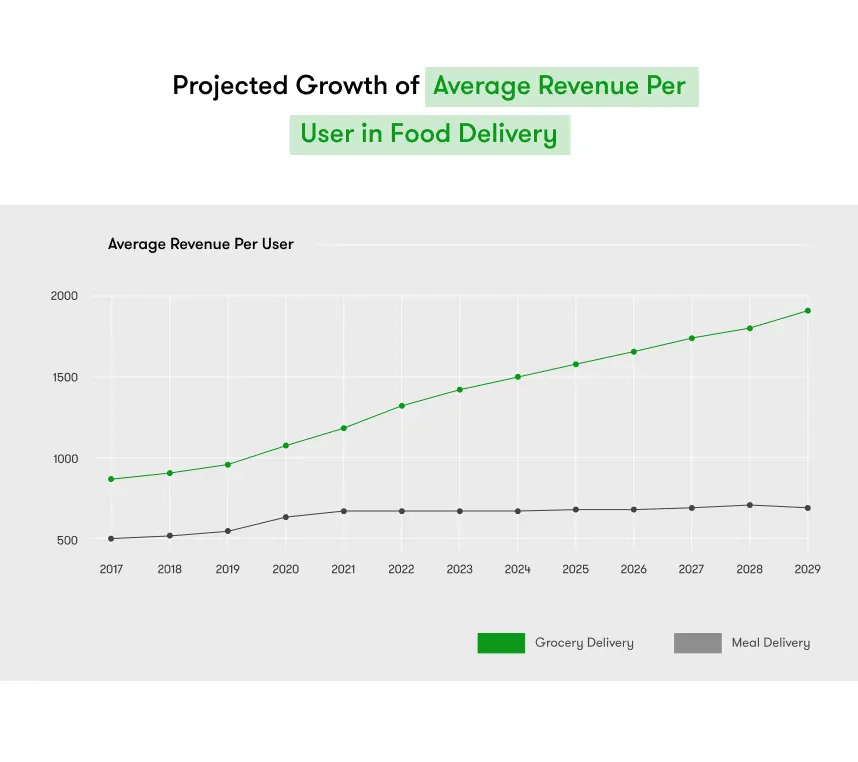
The food delivery industry is growing faster than ever. In 2025, the average revenue per user in the grocery delivery market is expected to reach $546.34. This shows how customers are relying more on food and grocery delivery than before.
For restaurant owners, investors, and business leaders, this is the right time to enter or expand in this market. However, with rising demand, competition is also getting stronger, making it essential to stay updated with the latest trends in food delivery apps to remain competitive and meet evolving customer expectations.
More People Prefer Ordering Food Online
- Many people now prefer delivery over dining out.
- In UAE, Saudi Arabia, and Qatar, apps like Talabat, Careem Now, and Jahez are leading the market.
- Customers expect a fast and smooth ordering experience, from placing an order to delivery.
Technology is Changing How Food Delivery Works
- AI helps businesses make deliveries faster and cheaper.
- Smart data tracking helps restaurants manage stock and reduce waste.
- Drones and robots are being tested for deliveries in major cities.
- Companies using new technology are ahead of those using old methods.
New Business Models Help Companies Earn More
- Cloud kitchens allow businesses to expand without high costs.
- Subscription meal plans bring steady income and loyal customers.
- Grocery and convenience stores are also using food delivery to grow.
- The right business model can increase profits and help businesses scale.
Stronger Competition Means Higher Customer Expectations
- Big brands like UberEats, Deliveroo, and HungerStation set high standards.
- Just having an app is not enough. Businesses must offer faster service and better customer experience.
- The right features for food delivery app success include:
- AI that suggests food based on customer preferences.
- Special offers and discounts to keep customers coming back.
- Easy payment and a smooth checkout process.
The food delivery industry is growing, but only businesses that adapt and improve will succeed. To stay ahead, companies must use smart technology and offer a better experience to customers. In the next section, we will look at the top food delivery apps of 2025 and what makes them successful.
Top 9 Food Delivery Apps in 2025 and What Makes Them Successful
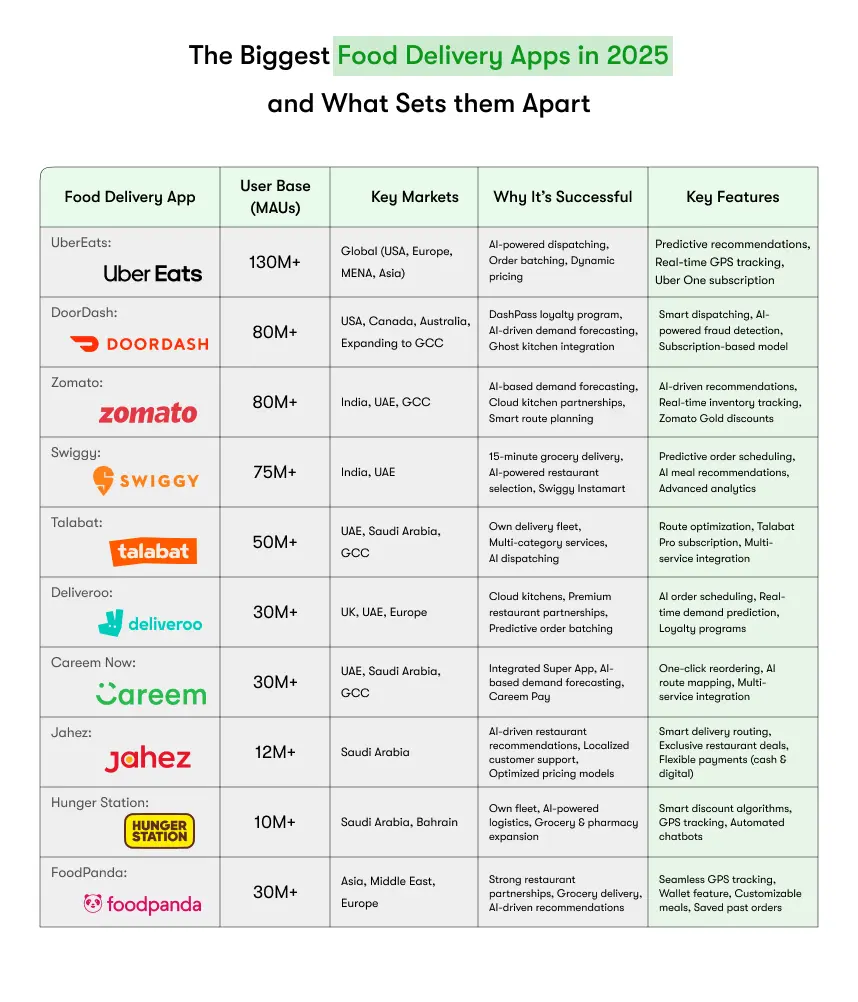
The food delivery industry is more competitive than ever, with leading platforms setting new standards in technology, logistics, and customer experience. With AI-driven logistics, cloud kitchens, and personalized recommendations, food delivery apps are not just platforms but data-driven ecosystems that shape how businesses operate.
To stay ahead, companies must invest in the right features for food delivery app success, ensuring seamless ordering, efficient deliveries, and a personalized user experience.
Below is a detailed breakdown of the top food delivery apps of 2025, covering both global leaders and regional powerhouses in the GCC market.
1. UberEats
UberEats is one of the world’s most dominant food delivery platforms, available in 6,000+ cities across multiple continents. The company leverages Uber’s existing ride-hailing infrastructure to optimize food deliveries, making it one of the fastest and most reliable food delivery services globally.
Why UberEats is Successful
- AI-powered dispatching matches orders with nearby drivers to reduce wait times.
- Order batching system allows drivers to pick up multiple orders along the same route.
- Dynamic pricing model adjusts delivery fees based on demand, maximizing profits.
- Data-driven recommendations personalize food suggestions based on customer history.
Key Features of UberEats
- Predictive order recommendations for personalized experiences.
- Real-time GPS tracking with driver ratings for service transparency.
- Automated delivery time estimations using AI-powered traffic analysis.
- Subscription model (Uber One) offering free deliveries and exclusive discounts.
2. Zomato
Zomato is one of the largest food delivery and restaurant discovery platforms in India and the GCC region. The platform integrates customer reviews, restaurant discovery, and AI-driven delivery logistics to provide a seamless user experience.
Why Zomato is Successful
- Smart route planning minimizes delays and optimizes driver allocation.
- Cloud kitchen partnerships allow restaurants to expand without physical locations.
- AI-based demand forecasting helps restaurants manage stock and avoid wastage.
- Quick commerce integration with grocery and essential deliveries for a broader service range.
Key Features of Zomato
- AI-driven personalized search and meal recommendations.
- Real-time inventory tracking for restaurant partners.
- Smart driver allocation to reduce delivery delays.
- Zomato Gold membership for exclusive discounts and offers.
3. Talabat
Talabat is the largest food delivery platform in the GCC, covering UAE, Saudi Arabia, Qatar, and seven other MENA countries. It operates its own delivery fleet, reducing reliance on third-party drivers and ensuring faster service and cost efficiency.
Why Talabat is Successful
- AI-powered order dispatching assigns the closest drivers for faster deliveries.
- Multi-category expansion, including grocery and pharmacy deliveries, increases revenue streams.
- Dynamic restaurant visibility model prioritizes restaurants with better customer service and reliability.
Key Features of Talabat
- AI-based route optimization for accurate delivery times.
- Talabat Pro subscription offering free deliveries and exclusive offers.
- Automated chatbot customer service to reduce operational costs.
- Multi-service integration for food, grocery, and essential deliveries.
4. Deliveroo
Deliveroo specializes in premium food delivery, focusing on high-end dining experiences in the UK, UAE, and Singapore. It has pioneered cloud kitchens to help restaurants expand their delivery reach.
Why Deliveroo is Successful
- Cloud kitchens help restaurants scale with lower overhead costs.
- AI-driven meal recommendations personalize user experiences.
- Predictive order batching reduces driver idle time and speeds up delivery.
Key Features of Deliveroo
- Advanced AI-based order scheduling.
- Real-time demand prediction for optimized driver allocation.
- Loyalty-based customer retention programs.
- Exclusive partnerships with fine-dining restaurants.

5. Careem Now
Careem Now is part of the Careem Super App, offering food delivery, ride-hailing, and digital payments in UAE, Saudi Arabia, and other GCC markets.
Why Careem Now is Successful
- Integrated super app ecosystem ensures high user engagement.
- Careem Pay digital wallet offers seamless transactions.
- AI-based demand forecasting helps optimize driver allocation.
Key Features of Careem Now
- One-click reordering for frequent customers.
- AI-powered route mapping for optimized deliveries.
- Multi-service integration with groceries and ride-hailing.
6. Jahez
Jahez is Saudi Arabia’s leading homegrown food delivery platform, known for fast deliveries and a strong local restaurant network.
Why Jahez Successful
- AI-driven restaurant recommendations improve customer engagement.
- Localized customer support ensures better service quality.
- Optimized pricing models keep delivery fees low.
Key Features of Jahez
- Smart delivery routing for minimal wait times.
- Exclusive deals with local Saudi restaurant chains.
- Flexible payment options, including cash on delivery.
Hungry for Success? Build your own food delivery app like jahez from scratch! Start Now!
7. HungerStation
HungerStation is one of Saudi Arabia’s oldest and most trusted food delivery platforms, providing grocery and food delivery services.
Why HungerStation is Successful
- Owns its own fleet, reducing dependency on third-party logistics.
- AI-powered logistics improve delivery accuracy and efficiency.
- Multi-category service expansion into grocery and pharmacy.
Key Features
- Smart discount algorithms for better customer retention.
- Real-time order tracking and GPS navigation.
- Automated customer service chatbots.
8. FoodPanda
FoodPanda is a food delivery app that operates in 40+ countries globally. It has partnered with 40,000 local restaurants to provide on-time delivery to the users. In addition to that, FoodPanda has a wide selection of restaurants and is one of the largest food and grocery delivery platforms in Asia.
Here are the features of FoodPanda-
- Seamless GPS to order from nearby restaurants
- Wallet feature in the app
- Feature to customize the meals
- Saves past orders to reorder
- Stores multiple addresses
9. Swiggy
Swiggy is one of the largest food delivery platforms in India and the GCC region, rapidly expanding in UAE and other Gulf countries. Known for its fast service and tech-driven operations, Swiggy has successfully diversified into quick commerce and grocery delivery through Swiggy Instamart, offering ultra-fast deliveries.
Why Swiggy is Successful
- 15-minute grocery delivery model through Swiggy Instamart.
- AI-powered restaurant selection to personalize recommendations.
- Dynamic pricing and surge fee optimization during peak hours.
- Subscription model (Swiggy One) for free deliveries and exclusive offers.
- Strong cloud kitchen network, enabling restaurant partners to expand without physical outlets.
Key Features of Swiggy
- Predictive order scheduling for faster deliveries.
- AI-driven meal recommendations based on customer behavior.
- Real-time delivery tracking with estimated time updates.
- Swiggy One membership for free deliveries and discounts.
- Advanced analytics dashboard for restaurant partners.
10. DoorDash
DoorDash is the largest food delivery service in North America, now expanding into GCC countries. The platform stands out by focusing on small business partnerships, AI-powered logistics, and dynamic pricing models to optimize profitability.
Why DoorDash is Successful
- Exclusive restaurant partnerships with major fast-food chains like Chick-fil-A and Taco Bell.
- DashPass loyalty program offering unlimited free deliveries and discounts.
- AI-driven demand forecasting to optimize delivery routes and reduce wait times.
- Strong network of ghost kitchens, allowing restaurants to scale their delivery reach.
- DoorDash Drive, enabling restaurants to handle their own deliveries using DoorDash’s logistics.
Key Features of DoorDash
- Smart dispatching system for better driver allocation.
- AI-powered fraud detection for secure transactions.
- Dynamic pricing model adjusting delivery fees based on demand.
- Real-time tracking and order prioritization system.
- DashPass subscription model to retain loyal customers.
Key Takeaways for Businesses Looking to Build a Food Delivery App
- AI-driven logistics and route optimization are critical for fast, cost-efficient deliveries.
- Subscription models and loyalty programs enhance customer retention.
- Cloud kitchens and delivery-only restaurants help businesses scale faster.
- Multi-category services (groceries, pharmacy, rides) increase platform engagement.
- Localized strategies help GCC-based apps dominate regional markets.
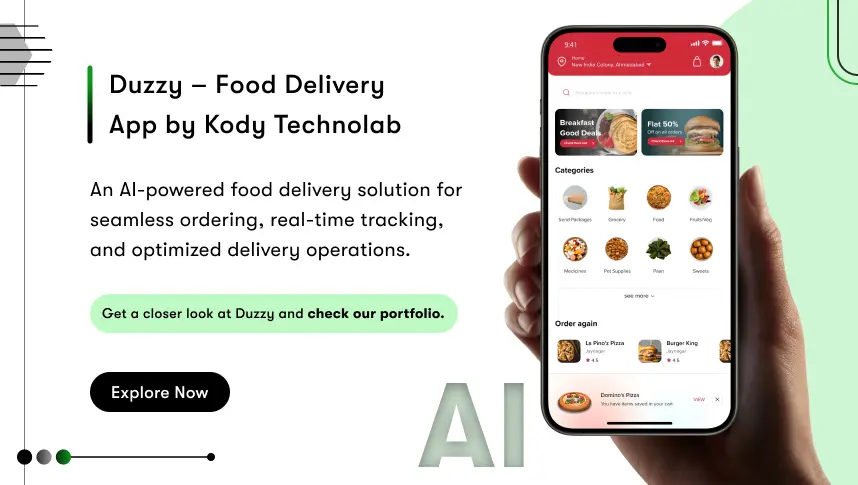
Are You Ready to Build Your Own Food Delivery App?
The food delivery industry is becoming increasingly competitive, and only apps that offer AI-powered logistics, real-time tracking, and flexible payment options can meet customer expectations and stay ahead of the competition.
If you’re considering launching a platform like UberEats or Talabat, the first step is finding the right development partner.
One key factor to plan for is the food delivery app development cost, which depends on features, scalability, and integrations. Working with an experienced app development company ensures your app meets market demands and customer expectations.
If food delivery app development suits your niche, why wait anymore? The first step is to hire an on-demand app development company that understands the crux of food delivery app development. Then, discuss your app idea with them and prepare yourself to conquer the food delivery industry.
Wrapping Up
Building a successful food delivery app requires more than just an idea—it demands the right technology, user experience, and business strategy. With increasing competition, only apps that offer fast deliveries, seamless navigation, and AI-powered recommendations can stand out.
From choosing the right features to ensuring scalable architecture, partnering with an experienced food delivery app development company is crucial. At Kody Technolab, we specialize in custom food delivery app solutions, integrating real-time tracking, smart dispatching, and secure payment systems to enhance user experience and operational efficiency.
Whether you’re a restaurant owner, entrepreneur, or startup, our expert team can help you design, develop, and scale your food delivery platform. With our cutting-edge technology and industry expertise, we ensure your app is built for long-term success.

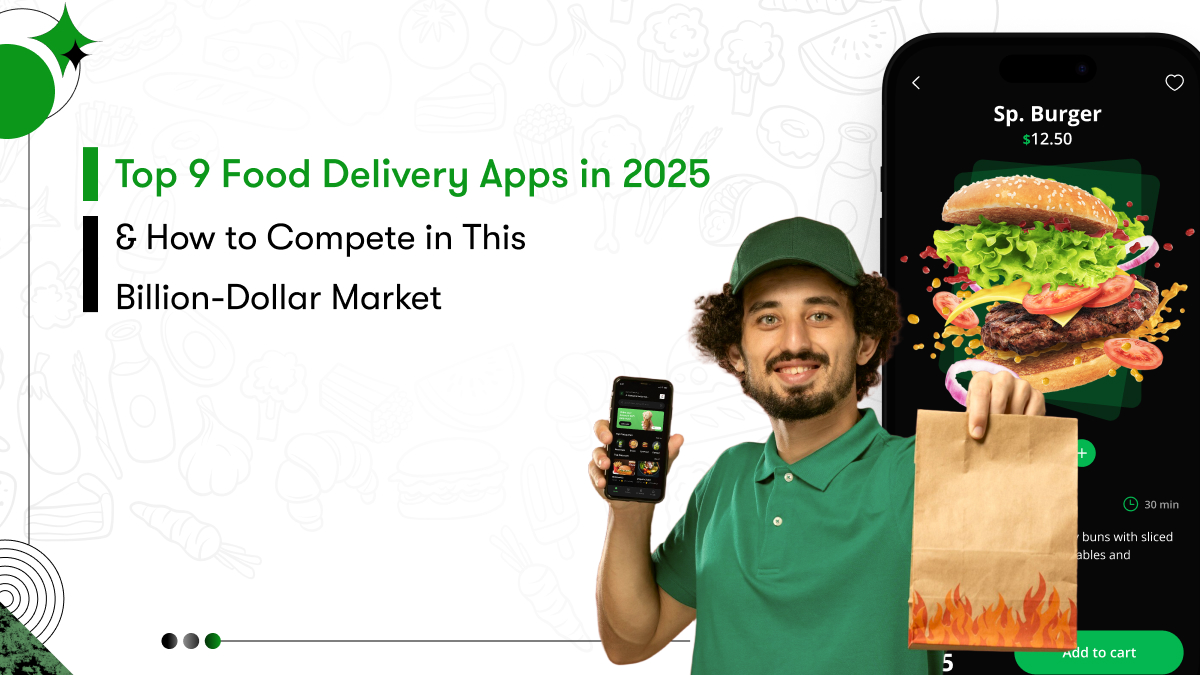
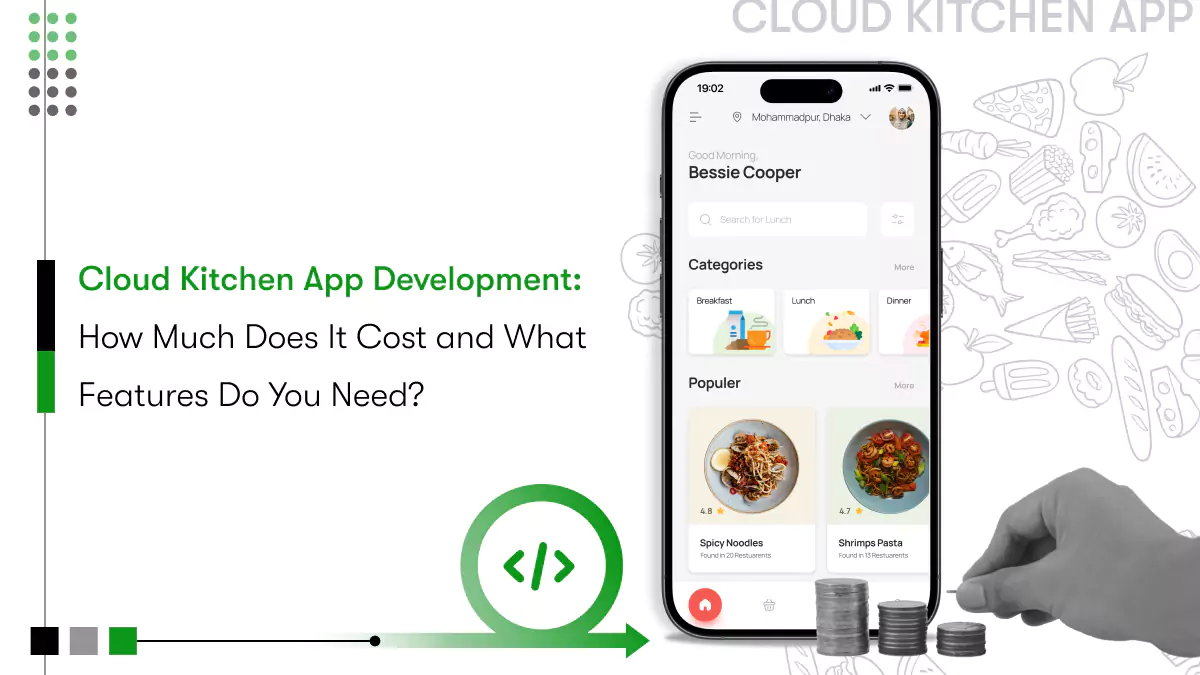
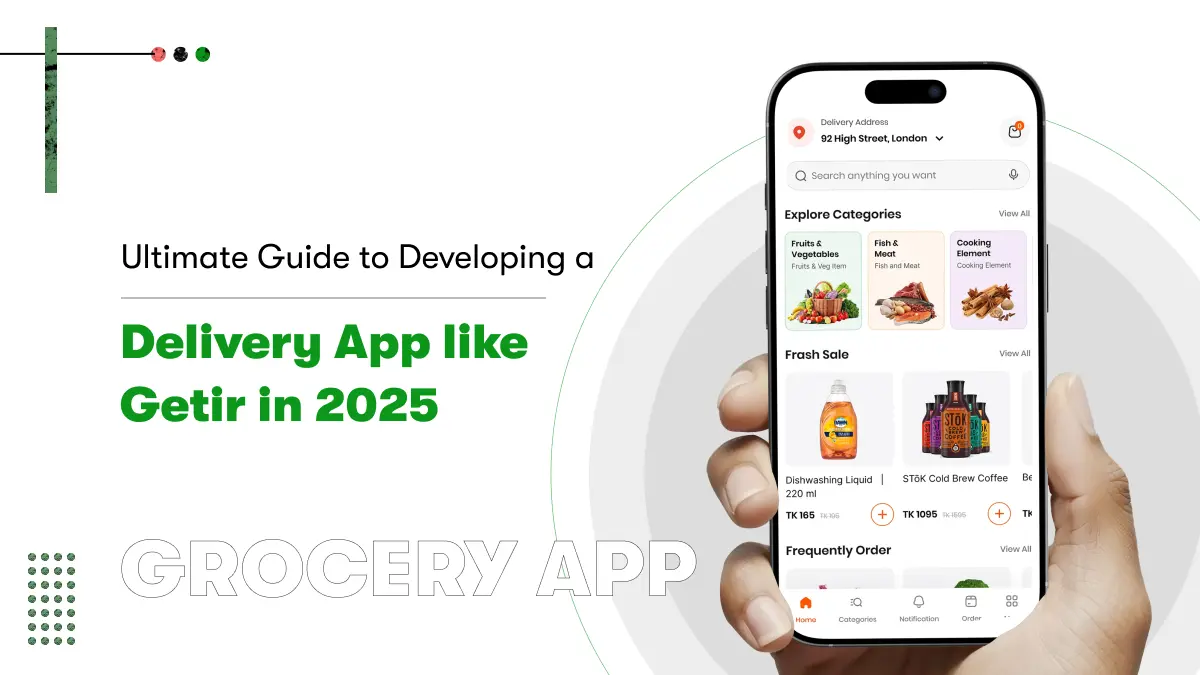
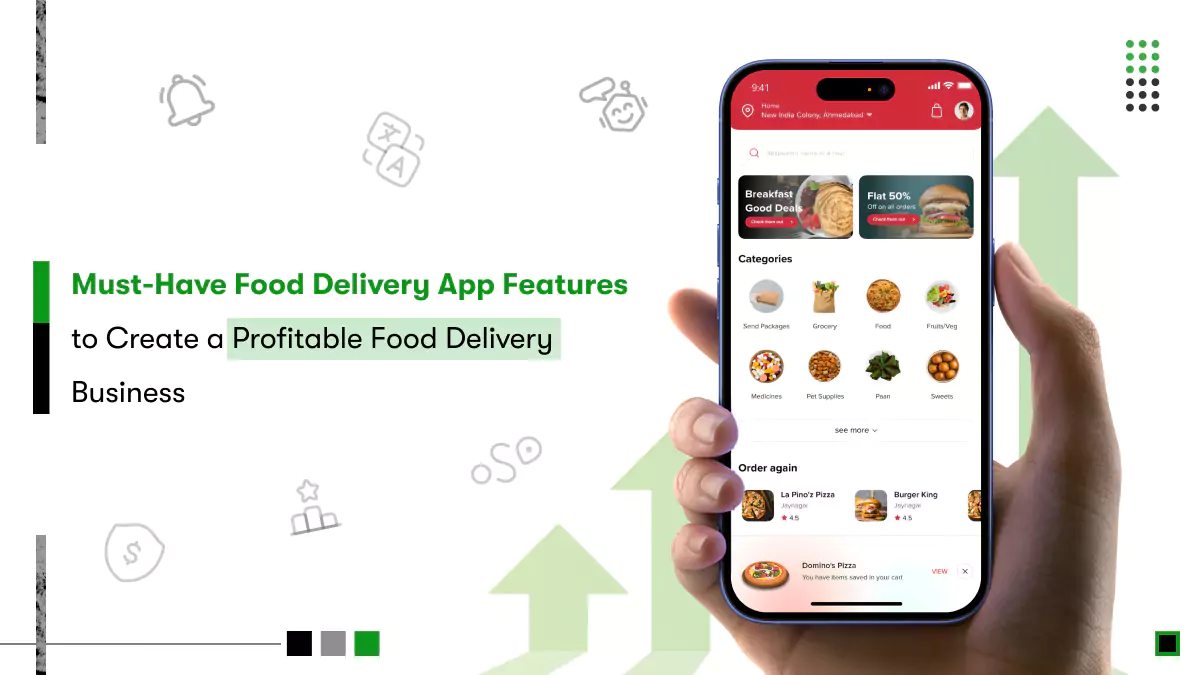
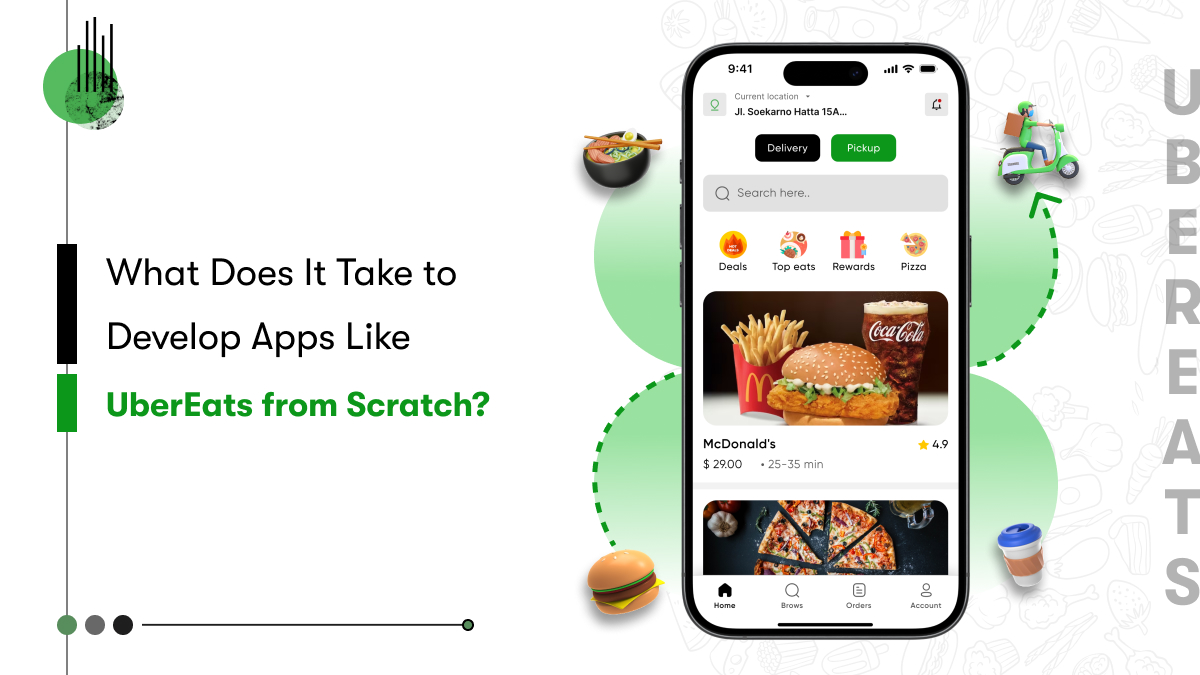
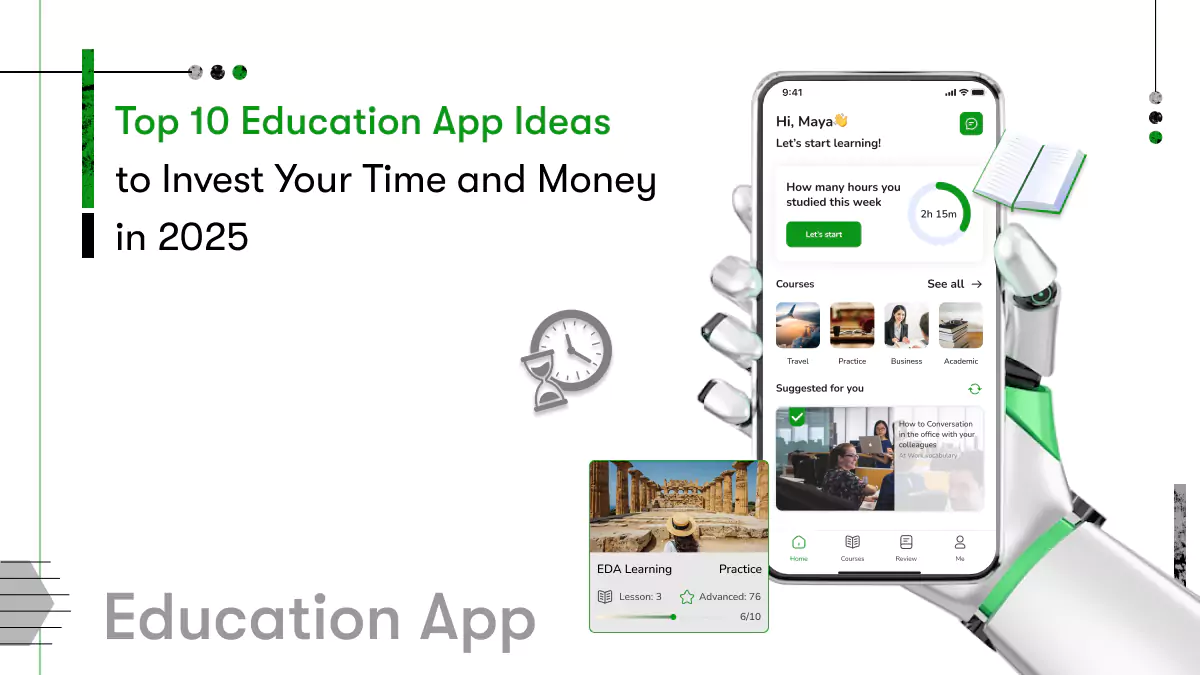





 Contact Information
Contact Information